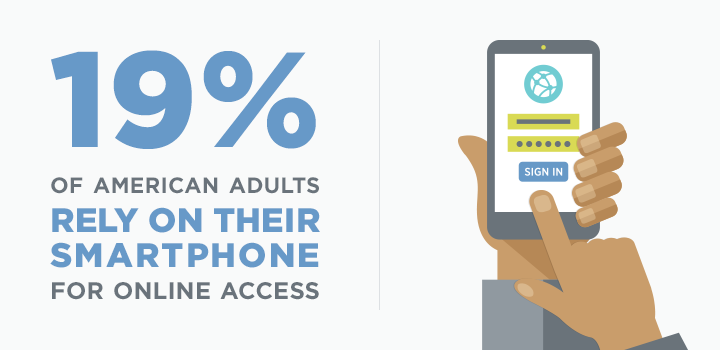Ongoing Onboarding: How Duolingo Introduces New Skills
Continue to Ongoing Onboarding: How Duolingo Introduces New Skills…
Take a look around. You see so many heads down in phones every day while waiting in line, walking down the street, dining out in restaurants, and virtually any other activity imaginable.
Depending on the study, it’s been reported that the average person is spending anywhere between 1.5 to 4.7 hours on their mobile devices. For many of us, we reach for our smartphones the minute we wake up and it is often the last thing we look at before going to bed.
What are we doing with all that time? Web browsing is one of the top three activities people do on their smartphone. How do we feel about all this time we are spending on our smartphones? Studies indicate we can’t imagine our lives without it and we feel it makes our lives better.
In this article we’ll illustrate some recent statistics about people and their smartphones.
According to a recent Pew Research Center report, nearly two-thirds (64%) of American adults now own a smartphone, up from 35% in 2011. This increase means more and more people are going online from their smartphone, and for some it is their primary access to the web.
In fact, the Pew Research Center report noted that of the Americans who own a smartphone, one-in-five (19%) rely to some degree on their smartphone for accessing online services and information — either because they lack broadband service at home, or because they have few options for accessing the web other than their smartphone. For some, both conditions apply — which Pew Research Center categorizes as “smartphone-dependent” users.
The report found that certain demographics of Americans are more reliant on their smartphones for online access than others, in particular:

Data Source: Pew Research Center
If you value reaching these specific demographics, plan for it with a mobile strategy. Talk to your users to understand their needs and expectations as well.
When it comes to completing tasks that are complex, require data entry, and take time and analysis, we have found that users who have access to devices other than smartphones prefer the larger screen size and access to keyboards.
But it’s important to note that many people do not have access to multiple devices so it is important to address the needs mobile-only users as well.
With the rise in ownership of smartphones and more Americans becoming increasingly reliant on their smartphones, it’s no surprise that many of us can’t imagine a life without one.
In a recent Gallup poll, a large percentage of adult Americans (46%) agreed with the statement “I can’t imagine my life without my smartphone.” The breakdown shows that women (51%) were more likely than men (41%) to say they can’t imagine their lives without their smartphones, and the younger the respondent, the more likely she or he was to feel this way.

Data Source: Gallup
Most of us keep our smartphones within reach; we rely on them to browse the web, to keep us connected with friends and family, to answer email, to get us where we need to go, and much more. This kind of attachment may come with a downside — many smartphone users say that being separated from their phone can be stressful and cause anxiety. Nonetheless, the majority (70%) of respondents say their smartphone has made their life better.
It’s reasonable to conclude that creating a well-designed mobile experience that is easy and enjoyable to use would only reinforce these feelings.
As previously mentioned, it’s been reported that the average person spends anywhere between 1.5 to 4.7 hours on their mobile devices. What are we doing with all that time?
Various studies rank our top actives on our smartphones. The findings vary, but one thing is consistent: web browsing always appears as one of the top three activities.
Other activities that top the list include: text messaging, voice and video calls, accessing email, social networking, taking photos, watching videos, playing games, getting directions, and listening to music.

Data Source: Pew Research Center
Smartphone ownership is poised to continue its growth, and people will continue to access the web from their smartphones. Are you addressing your mobile users? Contact us if you would like to talk about your mobile experience. We can help — whether you are looking for some quick fixes or a complete overhaul of your mobile presence.
Continue to Ongoing Onboarding: How Duolingo Introduces New Skills…